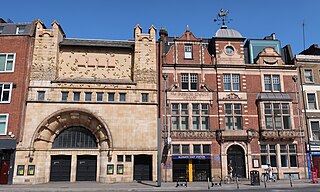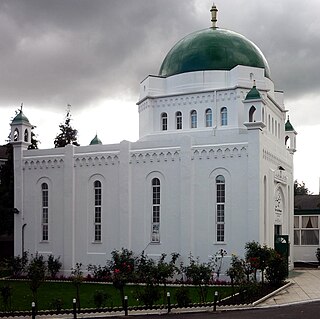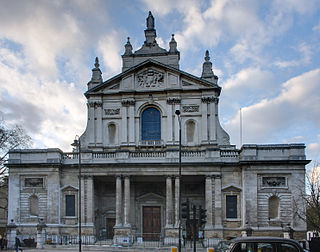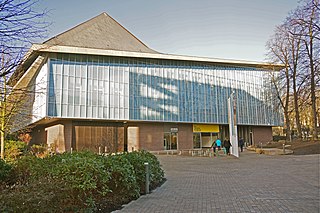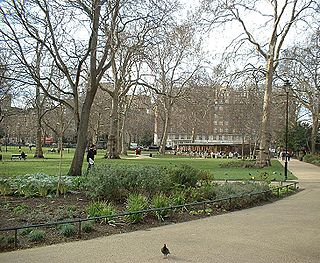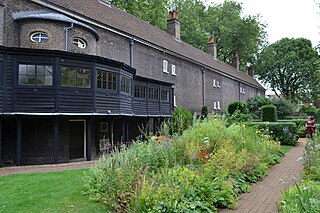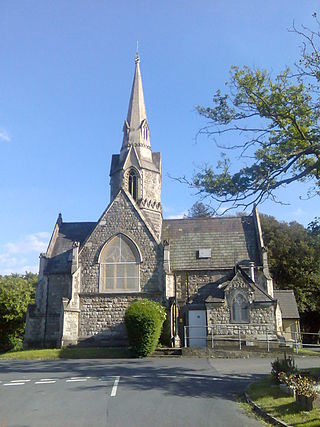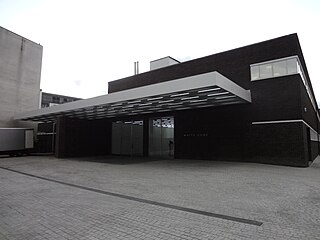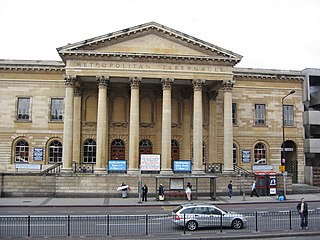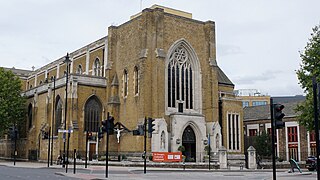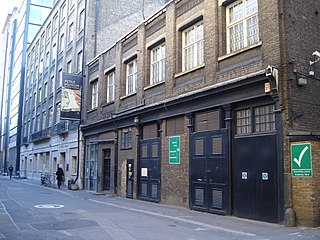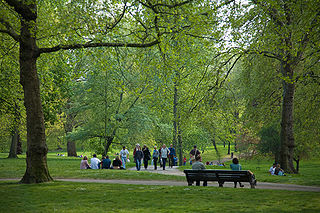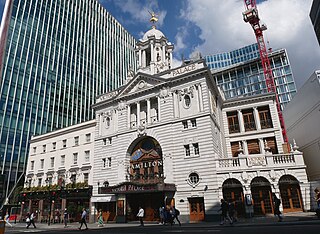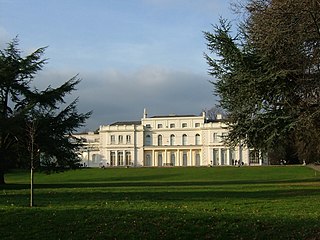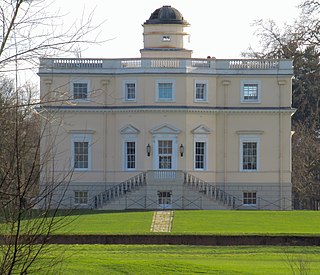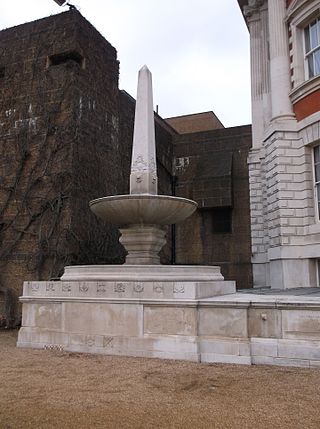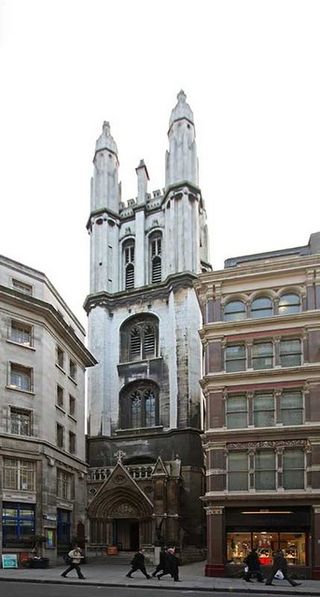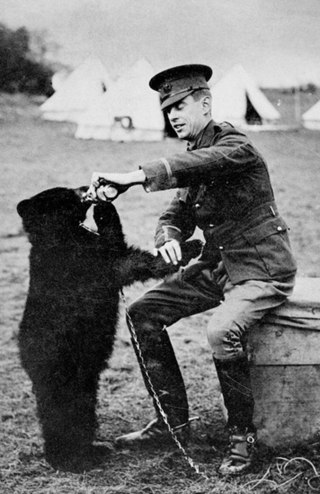100 Sights in London, United Kingdom (with Map and Images)
Legend
Welcome to your journey through the most beautiful sights in London, United Kingdom! Whether you want to discover the city's historical treasures or experience its modern highlights, you'll find everything your heart desires here. Be inspired by our selection and plan your unforgettable adventure in London. Dive into the diversity of this fascinating city and discover everything it has to offer.
Sightseeing Tours in LondonActivities in London
The George Inn, or The George, is a public house established in the medieval period on Borough High Street in Southwark, London, owned and leased by the National Trust. It is located about 250 metres (820 ft) from the south side of the River Thames near London Bridge and is the only surviving galleried London coaching inn.
Wikipedia: The George Inn, Southwark (EN), Website, Heritage Website
Hay's Galleria is a mixed use building in the London Borough of Southwark situated on the south bank of the River Thames featuring offices, restaurants, shops, and flats. Originally a warehouse and associated wharf for the port of London, it was redeveloped in the 1980s. It is a Grade II listed structure.
Primrose Hill is a Grade II listed public park located north of Regent's Park in London, England, first opened to the public in 1842. It was named after the 64 metres (210 ft) natural hill in the centre of the park, one of the highest natural points in the London Borough of Camden. The hill summit has a clear view of central London, as well as Hampstead and Belsize Park to the north and is adorned by an engraved quotation from William Blake. Based on the popularity of the park, the surrounding district and electoral ward were named Primrose Hill. The Primrose Hill district is in the London Borough of Camden, England.
The statue of Mary Seacole stands in the grounds of St Thomas' Hospital, Lambeth, London. Sculpted by Martin Jennings, the statue was executed in 2016. It honours Mary Seacole, a British-Jamaican who established a "British Hotel" during the Crimean War and who was posthumously voted first in a poll of "100 Great Black Britons".
St Paul's Cathedral, formally the Cathedral Church of St Paul the Apostle, is an Anglican cathedral in London, England, the seat of the Bishop of London. The cathedral serves as the mother church of the Diocese of London. It is on Ludgate Hill at the highest point of the City of London. Its dedication in honour of Paul the Apostle dates back to the original church on this site, founded in AD 604. The present structure, which was completed in 1710, is a Grade I listed building that was designed in the English Baroque style by Sir Christopher Wren. The cathedral's reconstruction was part of a major rebuilding programme initiated in the aftermath of the Great Fire of London. The earlier Gothic cathedral, largely destroyed in the Great Fire, was a central focus for medieval and early modern London, including Paul's walk and St Paul's Churchyard, being the site of St Paul's Cross.
Wikipedia: St Paul's Cathedral (EN), Website, Heritage Website
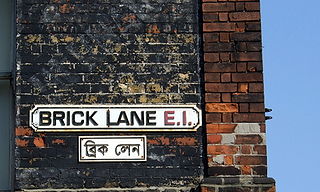
Brick Lane is a famous street in the East End of London, in the borough of Tower Hamlets. It runs from Swanfield Street in Bethnal Green in the north, crosses the Bethnal Green Road before reaching the busiest, most commercially active part which runs through Spitalfields, or along its eastern edge. Brick Lane's southern end is connected to Whitechapel High Street by a short extension called Osborn Street.
Clarence House is a royal residence on The Mall in the City of Westminster, London. It was built in 1825–1827, adjacent to St James's Palace, for the royal Duke of Clarence, the future King William IV.

The Mall is a ceremonial route and roadway in the City of Westminster, central London, that travels 1 kilometre (0.62 mi) between Buckingham Palace at its western end and Trafalgar Square via Admiralty Arch to the east. Along the north side of The Mall is green space and St. James's Palace with other official buildings, and to the south is St James's Park. Near the east end at Trafalgar Square and Whitehall it is met by Horse Guards Road and Spring Gardens, near the west end at the Victoria Memorial it is met by the Constitution Hill roadway and the Spur Road to the street of Buckingham Gate. It is closed to traffic on Saturdays, Sundays, public holidays and on ceremonial occasions.
Leadenhall Market is a covered market in London, England, located on Gracechurch Street but with vehicular access also available via Whittington Avenue to the north and Lime Street to the south and east, and additional pedestrian access via a number of narrow passageways.
Wikipedia: Leadenhall Market (EN), Website, Heritage Website
The Natural History Museum in London is a museum that exhibits a vast range of specimens from various segments of natural history. It is one of three major museums on Exhibition Road in South Kensington, the others being the Science Museum and the Victoria and Albert Museum. The Natural History Museum's main frontage, however, is on Cromwell Road.
Wikipedia: Natural History Museum, London (EN), Website, Heritage Website
Canary Wharf is an area of London, England, located near the Isle of Dogs in the London Borough of Tower Hamlets. Canary Wharf is defined by the Greater London Authority as being part of London's central business district, alongside Central London. Alongside the City of London, it constitutes one of the main financial centres in the United Kingdom and the world, containing many high-rise buildings including the third-tallest in the UK, One Canada Square, which opened on 26 August 1991.
The Royal Exchange in London was founded in the 16th century by the merchant Sir Thomas Gresham on the suggestion of his factor Richard Clough to act as a centre of commerce for the City of London. The site was provided by the City of London Corporation and the Worshipful Company of Mercers, who still jointly own the freehold. The original foundation was ceremonially opened by Queen Elizabeth I who granted it its "royal" title. The current neoclassical building has a trapezoidal floor plan and is flanked by Cornhill and Threadneedle Street, which converge at Bank junction in the heart of the city. It lies in the Ward of Cornhill.
13. Elizabeth Tower
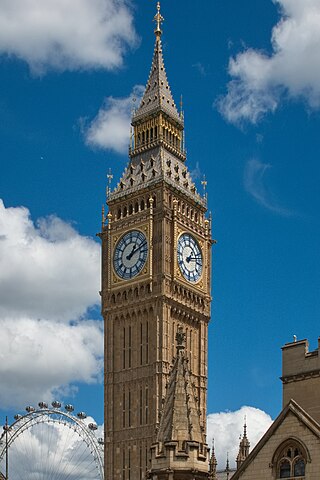
Big Ben is the nickname for the Great Bell of the Great Clock of Westminster, and, by extension, for the clock tower itself, which stands at the north end of the Palace of Westminster in London, England. Originally known simply as the Clock Tower, it was renamed Elizabeth Tower in 2012 to mark the Diamond Jubilee of Elizabeth II. The clock is a striking clock with five bells.
14. The Shard
The Shard, also referred to as the Shard London Bridge and formerly London Bridge Tower, is a pyramid-shaped 72-storey mixed-use development supertall skyscraper, designed by the Italian architect Renzo Piano, in Bermondsey, London, that forms part of The Shard Quarter development. Standing 309.6 metres high, The Shard is the tallest building in the United Kingdom, the seventh-tallest building in Europe, and the second-tallest outside Russia behind the Varso Tower in Warsaw, which beats the Shard by less than half a metre. The Shard replaced Southwark Towers, a 24-storey office block built on the site in 1975.
15. St Pancras International Station
St Pancras railway station, officially known since 2007 as London St Pancras International, is a major central London railway terminus on Euston Road in the London Borough of Camden. It is the terminus for Eurostar services from Belgium, France and the Netherlands to London. It provides East Midlands Railway services to Leicester, Corby, Derby, Sheffield and Nottingham on the Midland Main Line, Southeastern high-speed trains to Kent via Ebbsfleet International and Ashford International, and Thameslink cross-London services to Bedford, Cambridge, Peterborough, Brighton, Horsham and Gatwick Airport. It stands between the British Library, the Regent's Canal and London King's Cross railway station, with which it shares a London Underground station, King's Cross St Pancras.
Wikipedia: St Pancras railway station (EN), Heritage Website
16. British Library
The British Library is a research library in London that is the national library of the United Kingdom. It is one of the largest libraries in the world. It is estimated to contain between 170 and 200 million items from many countries. As a legal deposit library, the British Library receives copies of all books produced in the United Kingdom and Ireland, including a significant proportion of overseas titles distributed in the United Kingdom. The Library is a non-departmental public body sponsored by the Department for Culture, Media and Sport.
17. London King's Cross Railway Station
King's Cross railway station, also known as London King's Cross, is a passenger railway terminus in the London Borough of Camden, on the edge of Central London. It is in the London station group, one of the busiest stations in the United Kingdom and the southern terminus of the East Coast Main Line to Yorkshire and the Humber, North East England and Scotland. Adjacent to King's Cross station is St Pancras International, the London terminus for Eurostar services to continental Europe. Beneath both main line stations is King's Cross St Pancras tube station on the London Underground; combined, they form one of the country's largest and busiest transport hubs.
Wikipedia: London King's Cross railway station (EN), Heritage Website
18. 30 St Mary Axe
The Gherkin, officially 30 St Mary Axe and previously known as the Swiss Re Building, is a commercial skyscraper in London's primary financial district, the City of London. It was completed in December 2003 and opened in April 2004. With 41 floors, it is 180 metres (591 ft) tall and stands on the sites of the former Baltic Exchange and Chamber of Shipping, which were extensively damaged in 1992 in the Baltic Exchange bombing by a device placed by the Provisional IRA in St Mary Axe, a narrow street leading north from Leadenhall Street.
19. Richmond Park
Richmond Park, in the London Borough of Richmond upon Thames, is the largest of London's Royal Parks and is of national and international importance for wildlife conservation. It was created by Charles I in the 17th century as a deer park. It is now a national nature reserve, a Site of Special Scientific Interest and a Special Area of Conservation and is included, at Grade I, on Historic England's Register of Historic Parks and Gardens of special historic interest in England. Its landscapes have inspired many famous artists and it has been a location for several films and TV series.
20. Crystal Palace Museum
The Crystal Palace was a cast iron and plate glass structure, originally built in Hyde Park, London, to house the Great Exhibition of 1851. The exhibition took place from 1 May to 15 October 1851, and more than 14,000 exhibitors from around the world gathered in its 990,000-square-foot (92,000 m2) exhibition space to display examples of technology developed in the Industrial Revolution. Designed by Joseph Paxton, the Great Exhibition building was 1,851 feet (564 m) long, with an interior height of 128 feet (39 m), and was three times the size of St Paul's Cathedral.
21. Eventim Apollo
The Hammersmith Apollo, currently called the Eventim Apollo for sponsorship reasons, and formerly known as the Hammersmith Odeon, is a live entertainment performance venue, originally built as a cinema called the Gaumont Palace. Located in Hammersmith, London, it is an art deco Grade II* listed building.
Wikipedia: Hammersmith Apollo (EN), Website, Heritage Website
22. Alexandra Palace
Alexandra Palace is an entertainment and sports venue in North London, situated between Wood Green and Muswell Hill in the London Borough of Haringey. A Grade II listed building, it is built on the site of Tottenham Wood and the later Tottenham Wood Farm. Originally built by John Johnson and Alfred Meeson, it opened in 1873 but following a fire two weeks after its opening, was rebuilt by Johnson. Intended as "The People's Palace" and often referred to as "Ally Pally", its purpose was to serve as a public centre of recreation, education and entertainment; North London's counterpart to the Crystal Palace in South London.
23. East London Mosque
The East London Mosque (ELM) is situated in the London Borough of Tower Hamlets between Whitechapel and Aldgate East. Combined with the adjoining London Muslim Centre and Maryam Centre, it is one of the largest mosques in Western Europe accommodating more than 7,000 worshippers for congregational prayers. The mosque was one of the first in the UK to be allowed to use loudspeakers to broadcast the adhan.
24. Ham House
Ham House is a 17th-century house set in formal gardens on the bank of the River Thames in Ham, south of Richmond in the London Borough of Richmond upon Thames. The original house was completed in 1610 by Thomas Vavasour, an Elizabethan courtier and Knight Marshal to James I. It was then leased, and later bought, by William Murray, a close friend and supporter of Charles I. The English Civil War saw the house and much of the estate sequestrated, but Murray's wife Katherine regained them on payment of a fine. During the Protectorate his daughter Elizabeth, Countess of Dysart on her father's death in 1655, successfully navigated the prevailing anti-royalist sentiment and retained control of the estate.
Wikipedia: Ham House (EN), Website, Opening Hours, Heritage Website
25. The Cenotaph
The Cenotaph is a war memorial on Whitehall in London, England. Designed by Sir Edwin Lutyens, it was unveiled in 1920 as the United Kingdom's national memorial to the dead of Britain and the British Empire of the First World War, was rededicated in 1946 to include those of the Second World War, and has since come to represent the Commonwealth casualties from those and subsequent conflicts. The word cenotaph is derived from Greek, meaning 'empty tomb'. Most of the dead were buried close to where they fell; thus, the Cenotaph symbolises their absence and is a focal point for public mourning. The original temporary Cenotaph was erected in 1919 for a parade celebrating the end of the First World War, at which more than 15,000 servicemen, including French and American soldiers, saluted the monument. More than a million people visited the site within a week of the parade.
26. Science Museum
The Science Museum is a major museum on Exhibition Road in South Kensington, London. It was founded in 1857 and is one of the city's major tourist attractions, attracting 3.3 million visitors annually in 2019.
27. Imperial War Museum
The Imperial War Museum (IWM), currently branded "Imperial War Museums", is a British national museum. It is headquartered in London, with five branches in England. Founded as the Imperial War Museum in 1917, it was intended to record the civil and military war effort and sacrifice of the United Kingdom and its Empire during the First World War. The museum's remit has since expanded to include all conflicts in which British or Commonwealth forces have been involved since 1914. As of 2012, the museum aims "to provide for, and to encourage, the study and understanding of the history of modern war and 'wartime experience'."
Wikipedia: Imperial War Museum (EN), Website, Heritage Website
28. Hampstead Heath Extension
Hampstead Heath is an ancient heath in London, spanning 320 hectares. This grassy public space sits astride a sandy ridge, one of the highest points in London, running from Hampstead to Highgate, which rests on a band of London Clay. The heath is rambling and hilly, embracing ponds, recent and ancient woodlands, a lido, playgrounds, and a training track, and it adjoins the former stately home of Kenwood House and its estate. The south-east part of the heath is Parliament Hill, from which the view over London is protected by law.
29. Riverside Studios
Riverside Studios is an arts centre on the north bank of the River Thames in Hammersmith, London, England. The venue plays host to contemporary performance, film, visual art exhibitions and television production.
30. Baitul Futuh Mosque
The Baitul Futuh is a mosque complex of the Ahmadiyya Muslim Community, situated in Morden, London. It is one of the largest mosque complexes in Europe. Completed in 2003 at a cost of £15 million, entirely from donations of Ahmadi Muslims, the Mosque can accommodate a total of 13,000 worshippers. The main mosque has a height of 23m above ground, and to maximise capacity the building extends below ground. Baitul Futuh is located in the south-west London suburb London Borough of Merton. It is situated next to Morden South railway station, 0.4 miles from Morden Underground station and one mile from Morden Road tram stop.
31. Westminster Cathedral
Westminster Cathedral, formally the Metropolitan Cathedral of the Most Precious Blood of Our Lord Jesus Christ, is the largest Roman Catholic church in England and Wales and the seat of the Cardinal Archbishop of Westminster.
Wikipedia: Westminster Cathedral (EN), Website, Heritage Website
32. Royal Institute of British Architects
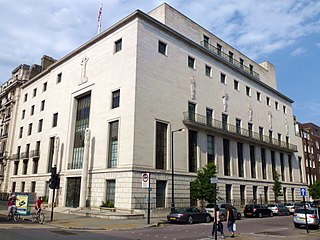
The Royal Institute of British Architects (RIBA) is a professional body for architects primarily in the United Kingdom, but also internationally, founded for the advancement of architecture under its royal charter granted in 1837, three supplemental charters and a new charter granted in 1971.
Wikipedia: Royal Institute of British Architects (EN), Website, Opening Hours
33. O2 Academy Brixton
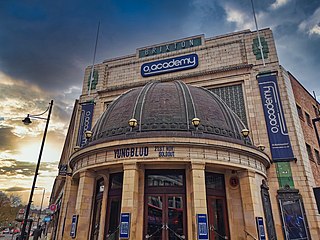
Brixton Academy (originally known as the Astoria Variety Cinema, previously known as Carling Academy Brixton, currently named O2 Academy Brixton as part of a sponsorship deal with the O2 brand) is a mid-sized concert venue located in South London, in the Lambeth district of Brixton.
34. Camden Lock Market
The Camden markets are a number of adjoining large retail markets, often collectively referred to as Camden Market or Camden Lock, located in the historic former Pickfords stables, in Camden Town, London. It is situated north of the Hampstead Road Lock of the Regent's Canal. Famed for their cosmopolitan image, products sold on the stalls include crafts, clothing, books, bric-a-brac, and fast food. It is the fourth-most popular visitor attraction in London, attracting approximately 250,000 people each week.
35. Roundhouse
The Roundhouse is a performing arts and concert venue at the Grade II* listed former railway engine shed in Chalk Farm, London, England. The building was erected in 1846–1847 by the London & North Western Railway as a roundhouse, a circular building containing a railway turntable, but was used for that purpose for only about a decade. After being used as a warehouse for a number of years, the building fell into disuse just before World War II. It was first made a listed building in 1954.
36. Baden-Powell House
Queen's Gate House, still commonly known by its previous name of Baden-Powell House, is a conference centre in South Kensington, London. It was built as a tribute to Lord Baden-Powell, the founder of Scouting, and has served as the headquarters for The Scout Association, as a hostel providing modern and affordable lodging for Scouts, Guides, their families and the general public staying in London and as a conference and event venue.
37. Finsbury Park Mosque
The Finsbury Park Mosque, also known as the North London Central Mosque, is a five-storey mosque located next to Finsbury Park station close to Arsenal Football Club's Emirates Stadium, in the London Borough of Islington. It serves the local community in Islington and the surrounding boroughs of North London, and it is registered as a charity in England.
38. BedZED
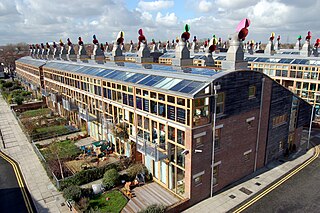
Beddington Zero Energy Development (BedZED) is an environmentally friendly housing development in Hackbridge, London, England. It is in the London Borough of Sutton, 2 miles (3 km) north-east of the town of Sutton itself. Designed to create zero carbon emissions, it was the first large scale community to do so.
39. Great Fire of London Monument
The Monument to the Great Fire of London, more commonly known simply as the Monument, is a fluted Doric column in London, England, situated near the northern end of London Bridge. Commemorating the Great Fire of London, it stands at the junction of Monument Street and Fish Street Hill, 202 feet (61.6 m) in height and 202 feet west of the spot in Pudding Lane where the Great Fire started on 2 September 1666. Constructed between 1671 and 1677, it was built on the site of St Margaret, New Fish Street, the first church to be destroyed by the Great Fire. It is Grade I-listed and is a scheduled monument. Another monument, the Golden Boy of Pye Corner, marks the point near Smithfield where the fire was stopped.
40. Royal Court Theatre
The Royal Court Theatre, at different times known as the Court Theatre, the New Chelsea Theatre, and the Belgravia Theatre, is a non-commercial West End theatre in Sloane Square, London, England. In 1956 it was acquired by and remains the home of the English Stage Company, which is known for its contributions to contemporary theatre and won the Europe Prize Theatrical Realities in 1999.
41. St Margaret's Church
The Church of St Margaret, Westminster Abbey is in the grounds of Westminster Abbey on Parliament Square, London, England. It is dedicated to Margaret of Antioch, and forms part of a single World Heritage Site with the Palace of Westminster and Westminster Abbey.
42. London Stone
London Stone is a historic landmark housed at 111 Cannon Street in the City of London. It is an irregular block of oolitic limestone measuring 53 × 43 × 30 cm, the remnant of a once much larger object that had stood for many centuries on the south side of the street.
43. Finsbury Park
Finsbury Park is a public park in Harringay, north London, England. The park lies on the southern-most edge of the London Borough of Haringey. It is in the area formerly covered by the historic parish of Hornsey, succeeded by the Municipal Borough of Hornsey. It was one of the first of the great London parks laid out in the Victorian era. The park borders the neighbourhoods of Finsbury Park, Stroud Green, and Manor House.
44. The Royal Hospital Chelsea
The Royal Hospital Chelsea is an Old Soldiers' retirement home and nursing home for some 300 veterans of the British Army. Founded as an almshouse — the ancient sense of the word "hospital" — by King Charles II in 1682, it is a 66-acre (27 ha) site located on Royal Hospital Road in Chelsea, London. It is an independent charity and relies partly upon donations to cover day-to-day running costs to provide care and accommodation for veterans.
45. City Hall
City Hall is a building in Southwark, London, which previously served as the headquarters of the Greater London Authority (GLA) between July 2002 and December 2021. It is located in the London Borough of Southwark, on the south bank of the River Thames near Tower Bridge. In June 2020, the GLA started a consultation on proposals to vacate City Hall and move to The Crystal, a GLA-owned property in Newham, at the end of 2021. The decision was confirmed on 3 November 2020 and the GLA vacated City Hall on 2 December 2021. The Southwark location is ultimately owned by the government of Kuwait.
46. Tate Britain

Tate Britain, known from 1897 to 1932 as the National Gallery of British Art and from 1932 to 2000 as the Tate Gallery, is an art museum on Millbank in the City of Westminster in London, England. It is part of the Tate network of galleries in England, with Tate Modern, Tate Liverpool and Tate St Ives. Founded by Sir Henry Tate, it houses a substantial collection of the art of the United Kingdom since Tudor times, and in particular has large holdings of the works of J. M. W. Turner, who bequeathed all his own collection to the nation. It is one of the largest museums in the country. The museum had 525,144 visitors in 2021, an increase of 34 percent from 2020 but still well below pre- COVID-19 pandemic levels. In 2021 it ranked 50th on the list of most-visited art museums in the world.
47. Bruce Castle
Bruce Castle is a Grade I listed 16th-century manor house in Lordship Lane, Tottenham, London. It is named after the House of Bruce who formerly owned the land on which it is built. Believed to stand on the site of an earlier building, about which little is known, the current house is one of the oldest surviving English brick houses. It was remodelled in the 17th, 18th and 19th centuries.
48. Newington Green Unitarian Church
Newington Green Unitarian Church is one of England's oldest Unitarian churches, located on Newington Green, north London. The site has maintained strong ties to progressive political and religious causes for over 300 years, and is London's oldest Nonconformist place of worship still in use. The church was founded in 1708 by English Dissenters, a community of which had been gathering around Newington Green for at least half a century before that date. The church is operated by New Unity and is part of the General Assembly of Unitarian and Free Christian Churches.
49. Almeida Theatre
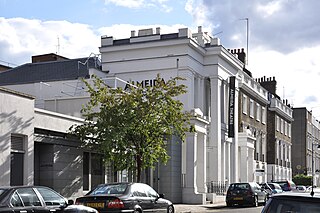
The Almeida Theatre is a 325-seat producing house located on Almeida Street off Upper Street in the London Borough of Islington. The theatre opened in 1980, and produces a diverse range of drama. Successful plays are often transferred to West End theatres.
50. Tower Hill Memorial
The Tower Hill Memorial is a pair of Commonwealth War Graves Commission memorials in Trinity Square Gardens, on Tower Hill in London, England. The memorials, one for the First World War and one for the Second, commemorate civilian, merchant seafarers and fishermen who were killed as a result of enemy action and have no known grave. The first, the Mercantile Marine War Memorial, was designed by Sir Edwin Lutyens and unveiled in 1928; the second, the Merchant Seamen's Memorial, was designed by Sir Edward Maufe and unveiled in 1955. A third memorial, commemorating merchant seamen who were killed in the 1982 Falklands War, was added to the site in 2005.
51. RAF Museum
The Royal Air Force Museum London is located on the former Hendon Aerodrome, in North London's Borough of Barnet. It includes five buildings and hangars showing the history of aviation and the Royal Air Force. It is part of the Royal Air Force Museum.
52. Kew Palace
Kew Palace is a British royal palace within the grounds of Kew Gardens on the banks of the River Thames. Originally a large complex, few elements of it survive. Dating to 1631 but built atop the undercroft of an earlier building, the main survivor is known as the Dutch House. Its royal occupation lasted from around 1728 until 1818, with a final short-lived occupation in 1844. The Dutch House is Grade I listed, and open to visitors. It is cared for by an independent charity, Historic Royal Palaces, which receives no funding from the government or the Crown. Alongside the Dutch House is a part of its 18th-century service wing, whilst nearby are a former housekeeper's cottage, brewhouse and kitchen block – most of these buildings are private, though the kitchens are open to the public. These kitchens, the Great Pagoda and Queen Charlotte's Cottage are also run by Historic Royal Palaces.
53. Saint Pancras Old Church
St Pancras Old Church is a Church of England parish church on Pancras Road, Somers Town, in the London Borough of Camden. Somers Town is an area of the ancient parish and later Metropolitan Borough of St Pancras.
Wikipedia: St Pancras Old Church (EN), Website, Heritage Website
54. The Royal Central School of Speech and Drama
The Royal Central School of Speech and Drama, commonly shortened to Central, is a drama school founded by Elsie Fogerty in 1906, as the Central School of Speech Training and Dramatic Art, to offer a new form of training in speech and drama for young actors and other students. It became a constituent college of the University of London in 2005 and is a member of Conservatoires UK and the Federation of Drama Schools.
Wikipedia: Royal Central School of Speech and Drama (EN), Website, Url
55. Dulwich Picture Gallery
Dulwich Picture Gallery is an art gallery in Dulwich, south London. It opened to the public in 1817 and was designed by the Regency architect Sir John Soane. His design was recognized for its innovative and influential method of illumination for viewing the art. It is the oldest public art gallery in England and was made an independent charitable trust in 1994. Until then, the gallery was part of the College of God's Gift, a charitable foundation established by the actor, entrepreneur and philanthropist Edward Alleyn in the early 17th century. The acquisition of artworks by its founders and bequests from its many patrons resulted in Dulwich Picture Gallery housing one of the country's finest collections of Old Masters, especially rich in French, Italian and Spanish Baroque paintings, and in British portraits from the Tudor era to the 19th century.
56. National Army Museum
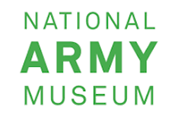
The National Army Museum is the British Army's central museum. It is located in the Chelsea district of central London, adjacent to the Royal Hospital Chelsea, the home of the "Chelsea Pensioners". The museum is a non-departmental public body. It is usually open to the public from 10:00 to 17:30, except on 25–26 December and 1 January. Admission is free.
57. Earl's Court tube station (Earl's Court Road)
Earl's Court tube station is a Grade II listed London Underground station in Earl's Court, London, on the District and Piccadilly lines. It is an important interchange for both lines and is situated in both Travelcard Zone 1 and Zone 2. The station has an eastern entrance on Earl's Court Road and a western entrance on Warwick Road. Another former entrance allowed passengers to enter the station from the other side of Warwick Road, via a ticket hall and subway leading to a concourse beneath the District line platforms. Earl's Court is a step-free tube station; the Earls Court Road entrance provides lift access between street and platform levels.
58. Battersea Park
Battersea Park is a 200-acre (83-hectare) green space at Battersea in the London Borough of Wandsworth in London. It is situated on the south bank of the River Thames opposite Chelsea and was opened in 1858.
59. Trafalgar Theatre
Trafalgar Theatre is a West End theatre in Whitehall, near Trafalgar Square, in the City of Westminster, London. The Grade II listed building was built in 1930 with interiors in the Art Deco style as the Whitehall Theatre; it regularly staged comedies and revues. It was converted into a television and radio studio in the 1990s, before returning to theatrical use in 2004 as Trafalgar Studios, the name it bore until 2020, with the auditorium converted to two studio spaces. It re-opened in 2021 following a major multi-million pound project to reinstate it to its original single-auditorium design.
60. Lloyd's of London
The Lloyd's building is the home of the insurance institution Lloyd's of London. It is located on the former site of East India House in Lime Street, in London's main financial district, the City of London. The building is a leading example of radical Bowellism architecture in which the services for the building, such as ducts and lifts, are located on the exterior to maximise space in the interior.
61. Holland House
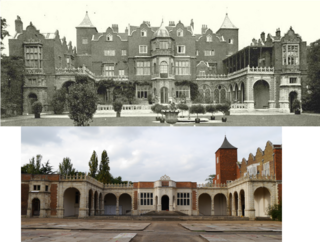
Holland House, originally known as Cope Castle, was an early Jacobean country house in Kensington, London, situated in a country estate that is now Holland Park. It was built in 1605 by the diplomat Sir Walter Cope. The building later passed by marriage to Henry Rich, 1st Baron Kensington, 1st Earl of Holland, and by descent through the Rich family, then became the property of the Fox family, during which time it became a noted gathering-place for Whigs in the 19th century. The house was largely destroyed by German firebombing during the Blitz in 1940 and today only the east wing and some ruins of the ground floor and south facade remain, along with various outbuildings and formal gardens. In 1949 the ruin was designated a grade I listed building and it is now owned by the Royal Borough of Kensington and Chelsea.
62. Kenwood House
Kenwood House is a stately home in Hampstead, London, on the northern boundary of Hampstead Heath. The present house, built in the late 17th century, was remodelled in the 18th century for William Murray, 1st Earl of Mansfield by Scottish architect Robert Adam, serving as a residence for the Earls of Mansfield until the 20th century.
63. RHS Chelsea Flower Show Pavilion
The RHS Chelsea Flower Show, formally known as the Great Spring Show, is a garden show held for five days in May by the Royal Horticultural Society (RHS) in the grounds of the Royal Hospital Chelsea in Chelsea, London. Held at Chelsea since 1912, the show is attended by members of the British royal family.
64. Home of Charles Darwin, Down House
Down House is the former home of the English naturalist Charles Darwin and his family. It was in this house and garden that Darwin worked on his theory of evolution by natural selection, which he had conceived in London before moving to Down.
65. Saint Anne's Church
St Anne's Church, Kew, is a parish church in Kew in the London Borough of Richmond upon Thames. The building, which dates from 1714 and is Grade II* listed, forms the central focus of Kew Green. The raised churchyard, which is on three sides of the church, has two Grade II* listed monuments – the tombs of the artists Johan Zoffany and Thomas Gainsborough. The French Impressionist painter Camille Pissarro (1830–1903), who stayed in 1892 at 10 Kew Green, portrayed St Anne's in his painting Church at Kew (1892).
66. Trent Park
Trent Park is an English country house in north London, accompanied by its former extensive grounds. The original great house, along with several statues and other structures within the grounds, such as the Orangery, are Grade II listed buildings. The site is designated as Metropolitan Green Belt, lies within a conservation area, and is also included at Grade II within the Register of Parks and Gardens of Special Historic Interest in England.
67. Red House
Red House is a significant Arts and Crafts building located in Bexleyheath, south-east London, England. Co-designed in 1859 by the architect Philip Webb and the designer William Morris, it was created to serve as a family home for Morris. Construction was completed in 1860.
68. The Barn Church (St Philip & All Saints)
The Barn Church, Kew, formally known as St Philip and All Saints, is the first barn church to be consecrated in England. The building, which is not listed, is on the corner of Atwood Avenue and Marksbury Avenue, in an area previously known as North Sheen and now in Kew, in the London Borough of Richmond upon Thames. It was constructed in 1929 from a 17th century barn from Oxted in Surrey. The west end was converted in 2002 into a large parish room with a gallery above looking down the length of the building. The sanctuary was refurbished and remodelled in 1998.
69. Whitechapel Gallery
The Whitechapel Gallery is a public art gallery in Whitechapel on the north side of Whitechapel High Street, in the London Borough of Tower Hamlets. The original building, designed by Charles Harrison Townsend, opened in 1901 as one of the first publicly funded galleries for temporary exhibitions in London. The building is a notable example of the British Modern Style. In 2009 the gallery approximately doubled in size by incorporating the adjacent former Passmore Edwards library building. It exhibits the work of contemporary artists and organizes retrospective exhibitions and other art shows.
70. O2 Empire
Shepherd's Bush Empire (currently known as O2 Shepherd's Bush Empire for sponsorship reasons, and formerly known as the BBC Television Theatre) is a music venue in Shepherd's Bush, West London, run by the Academy Music Group. It was originally built in 1903 as a music hall for impresario Oswald Stoll, designed by theatre architect Frank Matcham; among its early performers was Charlie Chaplin. In 1953 it became the BBC Television Theatre. Since 1994, it has operated as a music venue. It is a Grade II listed building.
71. Whitechapel Bell Foundry
The Whitechapel Bell Foundry was a business in the London Borough of Tower Hamlets. At the time of the closure of its Whitechapel premises, it was the oldest manufacturing company in Great Britain. The bell foundry primarily made church bells and their fittings and accessories, although it also provided single tolling bells, carillon bells and handbells. The foundry was notable for being the original manufacturer of the Liberty Bell, a famous symbol of American independence, and for re-casting Big Ben, which rings from the north clock tower at the Houses of Parliament in London.
72. The London Mosque
The Fazl Mosque also known as The London Mosque, is the first purpose-built mosque in London, England. It was opened on 23 October 1926 in Southfields, Wandsworth. At a cost of £6,223, the construction of the mosque and the purchase of the land on which it stands, was financed by the donations of Ahmadi Muslim women in Qadian, Punjab, British India. Between 1984 and 2019 the Fazl Mosque was the residence of the caliphs of the Ahmadiyya Muslim Community, and therefore its de facto international headquarters. The administrative headquarters now lies at the site of the Islamabad, Tilford.
73. Brompton Oratory
Brompton Oratory, also known as the London Oratory, is a neo-classical late-Victorian Catholic parish church in the Brompton area of the Royal Borough of Kensington and Chelsea, neighbouring Knightsbridge, London. Its name stems from Oratorians, who own the building, live nextdoor at the London Oratory, and service the parish. The church's formal title is the Church of the Immaculate Heart of Mary.
74. Design Museum
The Design Museum in Kensington, London, England, exhibits product, industrial, graphic, fashion, and architectural design. In 2018, the museum won the European Museum of the Year Award. The museum operates as a registered charity, and all funds generated by ticket sales aid the museum in curating new exhibitions.
75. Russell Square
Russell Square is a large garden square in Bloomsbury, in the London Borough of Camden, built predominantly by the firm of James Burton. It is near the University of London's main buildings and the British Museum. Almost exactly square, to the north is Woburn Place and to the south-east is Southampton Row. Russell Square tube station sits to the north-east.
76. Bushy Park
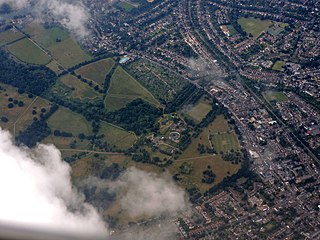
Bushy Park in the London Borough of Richmond upon Thames is the second largest of London's Royal Parks, at 445 hectares in area, after Richmond Park. The park, most of which is open to the public, is immediately north of Hampton Court Palace and Hampton Court Park and is a few minutes' walk from the west side of Kingston Bridge. It is surrounded by Teddington, Hampton, Hampton Hill and Hampton Wick and is mainly within the post towns of Hampton and Teddington, those of East Molesey and Kingston upon Thames taking the remainder.
77. Museum of the Home
The Museum of the Home, formerly the Geffrye Museum, is a free museum in the 18th-century Grade I-listed former almshouses on Kingsland Road in Hoxton, London. The museum's change of name was announced in 2019. The museum explores home and home life from 1600 to the present day with galleries which ask questions about 'home', present diverse lived experiences, and examine the psychological and emotional relationships people have with the idea of "home" alongside a series of period room displays.
78. St Pancras and Islington Cemetery
St Pancras and Islington Cemetery is a cemetery in East Finchley, North London. Although it is situated in the London Borough of Barnet, it is run as two cemeteries, owned by two other London Boroughs, Camden and Islington. The fence along the boundary which runs west to east between the two parts of the cemetery has been removed, although the line of it is still marked.
79. Wanstead Park
Wanstead Park is a municipal park covering an area of about 140 acres, in Wanstead, in the London Borough of Redbridge. It is also a district of the London Borough of Redbridge, which was in Essex until 1965.
80. White Cube
White Cube is a contemporary art gallery founded by Jay Jopling in London in 1993. The gallery has two branches in London: White Cube Mason's Yard in central London and White Cube Bermondsey in South East London; White Cube Hong Kong, in Central, Hong Kong Island; White Cube Paris, at 10 avenue Matignon in Paris; and White Cube West Palm Beach, which opened at 2512 Florida Avenue in 2020 and operates annually in West Palm Beach, Florida, from winter through to spring.
81. Metropolitan Tabernacle
The Metropolitan Tabernacle is a large independent Reformed Baptist church in the Elephant and Castle in London. It was the largest non-conformist church of its day in 1861. The Tabernacle fellowship has been worshipping together since 1650. Its first pastor was William Rider; other notable pastors and preachers include Benjamin Keach, John Gill, John Rippon and C. H. Spurgeon. The present pastor is Peter Masters.
82. Chislehurst Caves
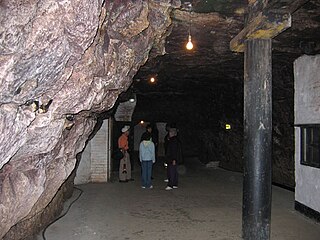
Chislehurst Caves are a series of intersecting man-made tunnels and caverns covering some 22 miles (35.4 km) in Chislehurst in the London Borough of Bromley. From the mid-13th to early 19th centuries the "caves" were created from the mining of flint and lime-burning chalk.
83. Saint George's Cathedral
The Metropolitan Cathedral Church of St George, usually known as St George's Cathedral, Southwark, is the cathedral of the Roman Catholic Archdiocese of Southwark, south London, and is the seat of the Archbishop of Southwark.
Wikipedia: St George's Cathedral, Southwark (EN), Heritage Website
84. St Clements Church
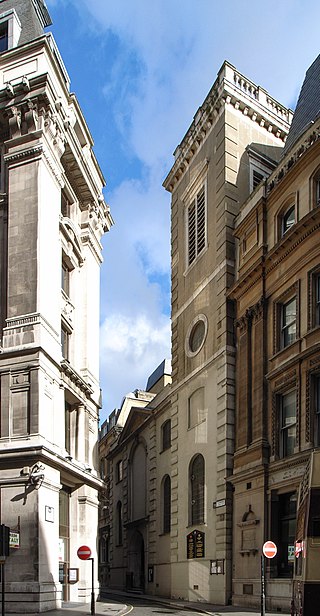
St Clement Eastcheap is a Church of England parish church in Candlewick Ward of the City of London. It is located on Clement's Lane, off King William Street and close to London Bridge and the River Thames.
85. Fairfield Halls
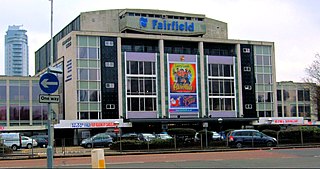
Fairfield Halls is an arts, entertainment and conference centre in Croydon, London, England, which opened in 1962 and contains a theatre and gallery, and a large concert hall regularly used for BBC television, radio and orchestral recordings. Fairfield Halls closed for a £30 million redevelopment in 2016, and reopened in 2019. As part of the building's re-opening Talawa Theatre Company relocated to the building, taking up a 200-seat theatre space and offices.
86. Petrie Museum of Egyptian Archeology
The Petrie Museum of Egyptian Archaeology in London is part of University College London Museums and Collections. The museum contains over 80,000 objects, making it one of the world's largest collections of Egyptian and Sudanese material. It is designated under the Arts Council England Designation Scheme as being of "national and international importance".
Wikipedia: Petrie Museum of Egyptian Archaeology (EN), Website
87. The Green Park
The Green Park, one of the Royal Parks of London, is in the City of Westminster, Central London. Green Park is to the north of the gardens and semi-circular forecourt of Buckingham Palace, across Constitution Hill road. The park is in the middle of a near-continuous chain of green spaces in Westminster that includes St James's Park, Hyde Park, and Kensington Gardens. To the northwest of Green Park is the district of St James's including, Lancaster House, Clarence House, and St James's Palace.
88. Fulham Palace
Fulham Palace lies on the north bank of the River Thames in Fulham, London, previously in the former English county of Middlesex. It is the site of the Manor of Fulham dating back to Saxon times and in the continuous possession of the bishops of London since the 8th century as lords of the manor until the 20th century. The much reduced estate comprises a Grade I listed complex with medieval origins and was formerly the principal residence of the Bishop of London from the 11th century until 1973. Though still owned by the Church of England, the palace, managed by the Fulham Palace Trust, houses a number of restored historic rooms and a museum documenting its long history. The property abuts Bishops Park, once part of the estate, and contains a large botanic garden. The palace garden is ranked Grade II* on the Register of Historic Parks and Gardens.
89. Victoria Palace Theatre
The Victoria Palace Theatre is a West End theatre in Victoria Street, in the City of Westminster. The theatre was designed by Frank Matcham in 1911 and was the last London theatre he designed before his retirement. The building was designated as a Grade II* listed building by Historic England in 1972. It has been the west end home of the musical "Hamilton" since 2017.
Wikipedia: Victoria Palace Theatre (EN), Website, Heritage Website
90. Gunnersbury Park
Gunnersbury Park is a park between Acton, Brentford, Chiswick and Ealing, West London, England. Purchased for the nation from the Rothschild family, it was opened to the public by Neville Chamberlain, then Minister of Health, on 21 May 1926. The park is currently jointly managed by Hounslow and Ealing borough councils. A major restoration project funded by the Heritage Lottery Fund was completed in 2018. The park and garden is Grade II listed.
91. King's Observatory
The King's Observatory is a Grade I listed building in Richmond, London. Now a private dwelling, it formerly housed an astronomical and terrestrial magnetic observatory founded by King George III. The architect was Sir William Chambers; his design of the King's Observatory influenced the architecture of two Irish observatories – Armagh Observatory and Dunsink Observatory near Dublin.
92. Hackney Marshes
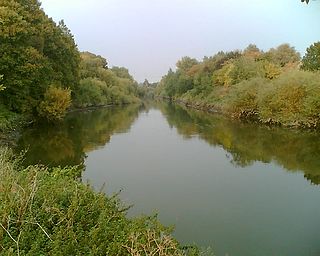
Hackney Marshes is an area of open space in London's Lower Lea Valley, lying on the western bank of the River Lea. It takes its name from its position on the eastern boundary of Hackney, the principal part of the London Borough of Hackney, and from its origin as an area of true marsh.
93. Royal Naval Division Memorial
The Royal Naval Division Memorial is a First World War memorial located on Horse Guards Parade in central London, and dedicated to members of the 63rd Division (RND) killed in that conflict. Sir Edwin Lutyens designed the memorial, which was unveiled on 25 April 1925—ten years to the day after the Gallipoli landings, in which the division suffered heavy casualties. Shortly after the war, former members of the division established a committee, chaired by one of their leading officers, Brigadier-General Arthur Asquith, to raise funds for a memorial. Progress was initially slow. The committee planned to incorporate its memorial into a larger monument proposed by the Royal Navy for Trafalgar Square. When the navy abandoned that project, the RND's committee decided to proceed independently. They engaged Lutyens, who, after negotiation with the Office of Works, produced a design for a fountain connected to the balustrade of the Admiralty Extension building.
94. St Michael's Cornhill
St Michael, Cornhill, is a medieval parish church in the City of London with pre-Norman Conquest parochial foundation. It lies in the ward of Cornhill. The medieval structure was lost in the Great Fire of London, and replaced by the present building, traditionally attributed to Sir Christopher Wren. The upper parts of the tower are by Nicholas Hawksmoor. The church was embellished by Sir George Gilbert Scott and Herbert Williams in the nineteenth century.
Wikipedia: St Michael, Cornhill (EN), Website, Heritage Website
95. Eaton Square
Eaton Square is a rectangular, residential garden square in London's Belgravia district. It is the largest square in London. It is one of the three squares built by the landowning Grosvenor family when they developed the main part of Belgravia in the 19th century that are named after places in Cheshire — in this case Eaton Hall, the Grosvenor country house. It is larger but less grand than the central feature of the district, Belgrave Square, and both larger and grander than Chester Square. The first block was laid out by Thomas Cubitt from 1827. In 2016 it was named as the "Most Expensive Place to Buy Property in Britain", with a full terraced house costing on average £17 million — many of such town houses have been converted, within the same, protected structures, into upmarket apartments.
96. City of London Cemetery and Crematorium
The City of London Cemetery and Crematorium is a cemetery and crematorium in the east of London. It is owned and operated by the City of London Corporation. It is designated Grade I on the Historic England National Register of Historic Parks and Gardens.
Wikipedia: City of London Cemetery and Crematorium (EN), Heritage Website
97. No 1 Poultry
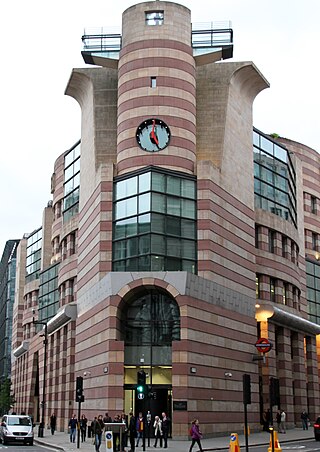
No 1 Poultry is a building in the City of London, allocated to office and commercial use. It occupies the apex where the eastern ends of Poultry and Queen Victoria Street meet at Mansion House Street, the western approach to Bank junction.
98. Horse Guards Parade
Horse Guards Parade is a large parade ground off Whitehall in central London. It is the site of the annual ceremonies of Trooping the Colour, which commemorates the monarch's official birthday, and the Beating Retreat.
99. Winnie the Bear
Winnipeg, or Winnie, was the name given to a female black bear that lived at London Zoo from 1915 until her death in 1934. Rescued by cavalry veterinarian Harry Colebourn, Winnie is best-remembered for inspiring the name of A. A. Milne and E. H. Shepard's character, Winnie-the-Pooh.
100. BFI IMAX
The BFI IMAX is an IMAX cinema in the South Bank district of London, just north of Waterloo station. It is owned and operated by the British Film Institute. From 2012 until 2022, it was operated by Odeon Cinemas.
Share
How likely are you to recommend us?
Disclaimer Please be aware of your surroundings and do not enter private property. We are not liable for any damages that occur during the tours.
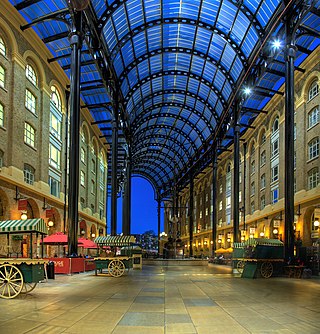
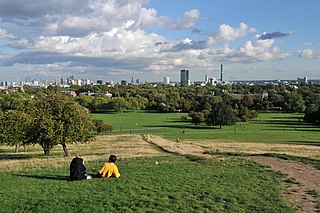
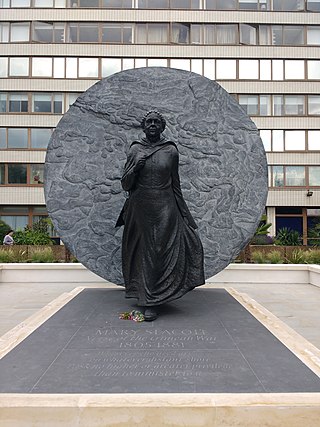


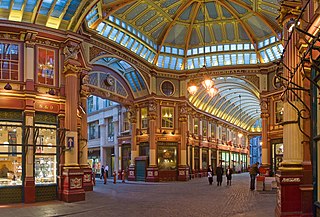

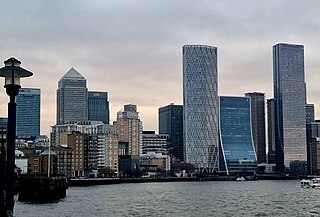
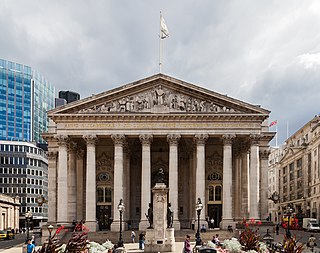
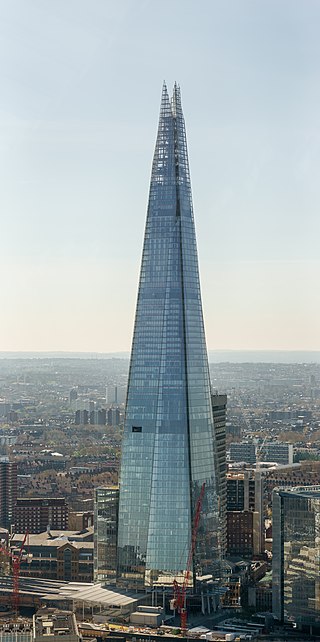
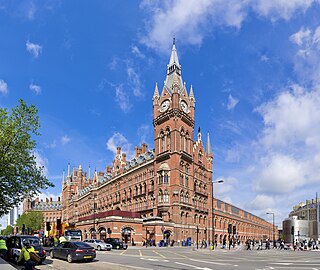
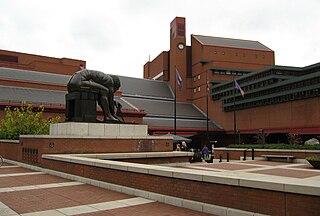


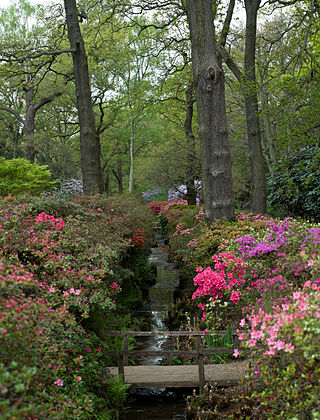
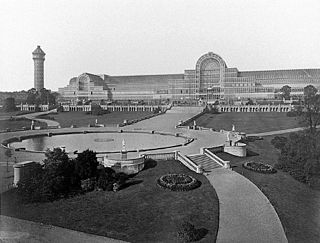

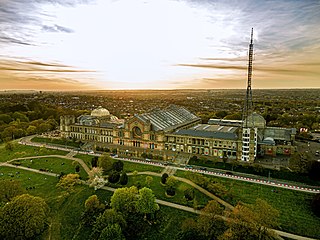

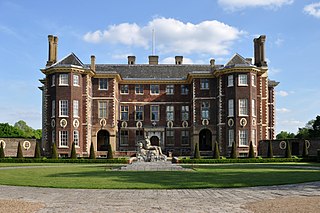



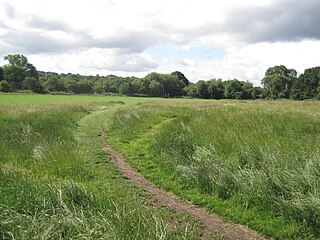
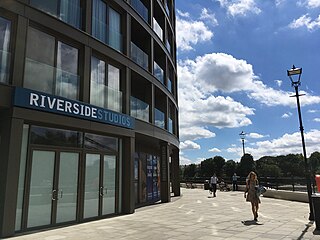

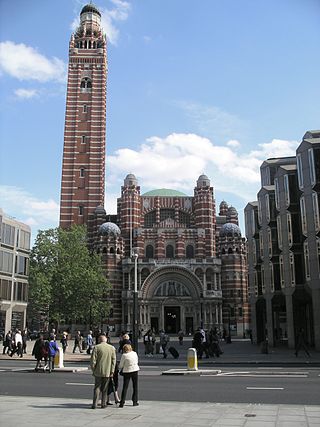


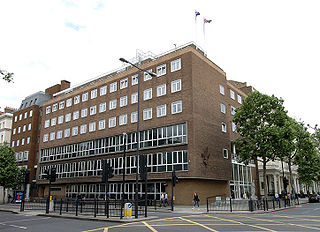



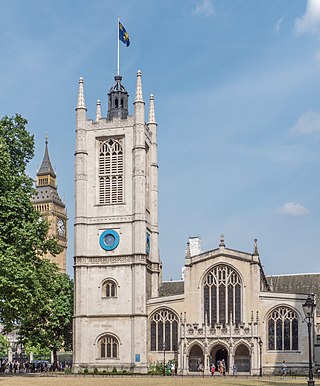
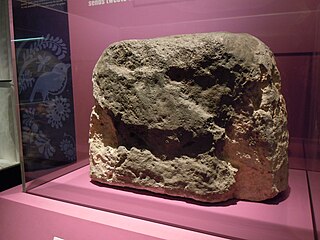


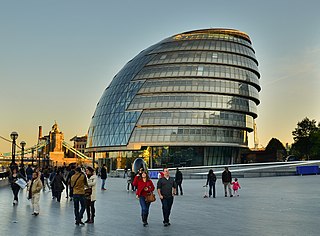

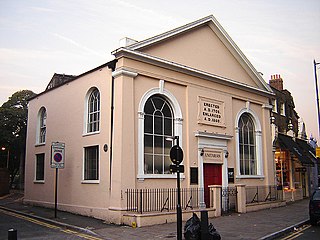
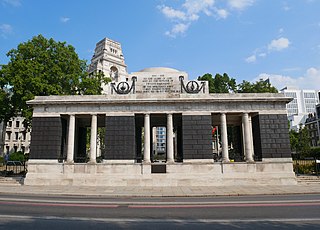
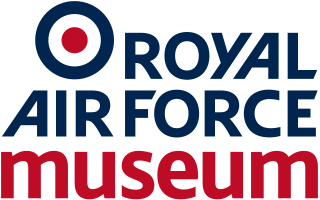
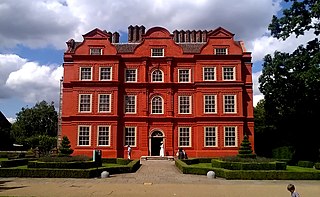
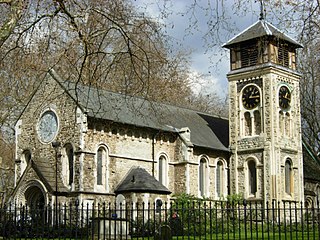
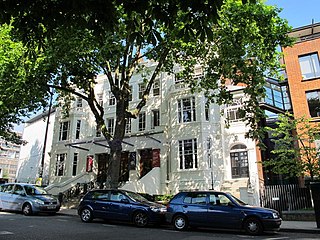

.jpg)
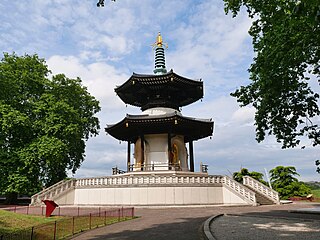
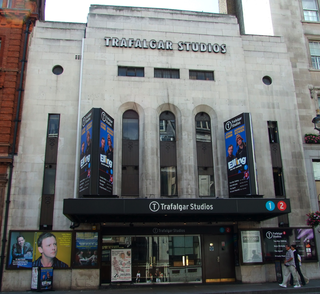
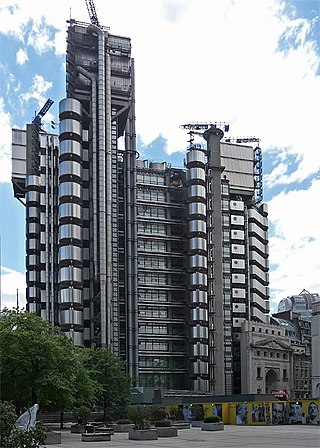
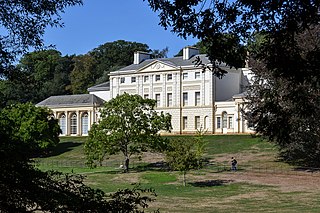
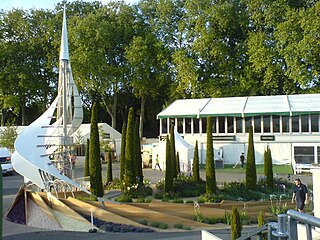

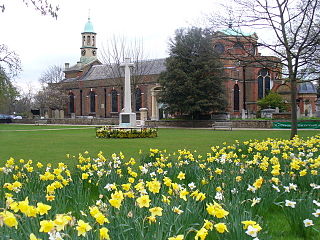
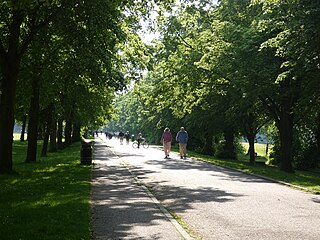
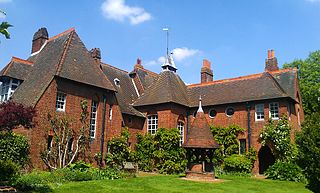
.jpg)
